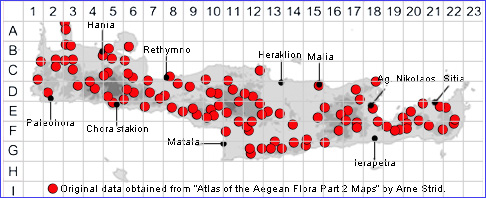SPECIES DESCRIPTION
ONONIS SPINOSA subsp. DIACANTHA
Family and Genus:- See- LEGUMINOSAE/Sect. ONONIS
Common Names:- Spiny rest-harrow
Homotypic Synonyms:- None
Meaning:- Ononis (Gr) A classical name used by the Greek physician
Dioscorides.
Spinosa (L) Spiny, with spines.
Diacantha (Gr) Double thorned.
General description:- Erect or spreading subshrub
Stems:-
1) 20-60 cm tall, not rooting at the nodes, usually sparsely glandular-pubescent
throughout. Lateral twigs transformed into sharp spines.
Leaves:-
1) 3-foliolate or the upper 1-foliolate.
2) Leaflets, 6-10 mm, sometimes less, very varied in shape, edges slightly
serrated.
Flowers:-
1) Usually solitary, axillary, forming a lax raceme.
2) Bracts, usually 1-foliolate.
3) Calyx, glandular-pubescent, and shortly hirsute at the mouth.
4) Corolla, 6-20 mm, pink or purple, occasionally white, usually much exceeding
the calyx.
Fruit:-
1) Legume, 6-10 mm, 2-4 seeded.
2) Seeds, 2 mm, brown or blackish, tuberculate, rarely smooth.
Key features:-
1) Stems, usually erect or ascending, not rooting.
2) Leaflets, obtuse or acute.
3) Plant, usually spiny.
4) Flowers, usually borne singly at each node of the raceme.
Habitat:- Stony slopes, meadows, scrub, open woodland. 0-1200(-1600) m.
Distribution:- Throughout Greece, - Widespread in Europe, the Mediterranean
region and through Anatolia to W Syria and N Iran. Widespread on Crete.
Flowering time:- Apr-Aug. occasionally later.
Photos by:- Steve Lenton

